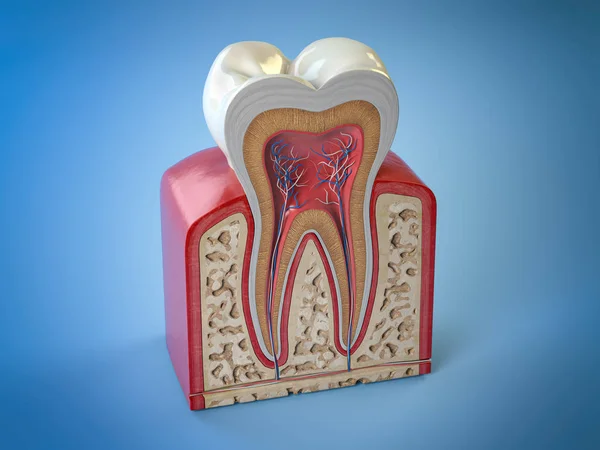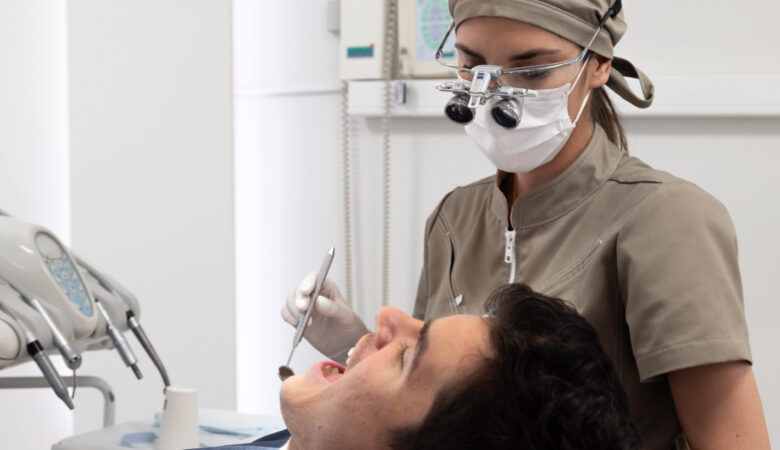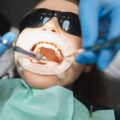Wisdom teeth removal is a common dental procedure that many people undergo, typically in their late teens or early twenties. These teeth, also known as third molars, are often extracted because they can cause overcrowding, misalignment, infections, or impaction.
Table of Contents
ToggleWhy is this procedure so common? Most people don’t have enough space in their mouths to accommodate wisdom teeth, leading to pain, swelling, and potential damage to adjacent teeth. This makes extraction the best preventive measure to maintain oral health.
Despite being routine, wisdom teeth removal is still a surgical procedure, which means proper aftercare is critical for a smooth recovery. Healing timelines can vary, but most people recover fully within a few weeks.
Understanding the Healing Process
The healing process after wisdom teeth removal involves several stages, and understanding what to expect can help you prepare better. Generally, recovery happens in four main phases:
- Immediate Recovery (Days 1–3): Pain, swelling, and some bleeding are common. This is when the blood clot forms in the socket, which is vital for healing.
- Early Healing (Days 4–7): Swelling reduces, and tissue repair begins. Pain subsides significantly during this time.
- Ongoing Healing (Week 2–4): The gums start to close, and jaw stiffness improves.
- Complete Recovery (1–3 months): Full tissue and bone healing occur during this stage, depending on the complexity of the extraction.
Several factors influence how quickly you heal, including your age, health condition, the complexity of the procedure, and adherence to aftercare instructions.
Day 1: The Surgery Day
What to Expect Immediately After Surgery:
- The area will be numb due to anesthesia, and mild discomfort begins as it wears off.
- Bleeding is normal for the first few hours. Gauze pads are used to control it.
- Swelling starts to appear within the first 24 hours.
Post-Operative Care Instructions:
- Rest: Avoid strenuous activities. Keep your head elevated to reduce swelling.
- Control Bleeding: Bite down gently on gauze for 30–45 minutes, replacing it as needed.
- Ice Packs: Apply ice on the cheek near the extraction site for 15–20 minutes at a time.
- Hydration: Drink plenty of water but avoid using straws, as suction can dislodge blood clots.
- Diet: Stick to soft, cold foods like yogurt, applesauce, or smoothies.
These steps are critical for preventing complications such as dry socket, a painful condition caused by dislodged blood clots.
Days 2–3: Managing Pain and Swelling
Controlling Discomfort:
- Use prescribed or over-the-counter pain medications as directed.
- Continue applying ice packs during the first 48 hours to reduce swelling.
- Avoid aspirin, as it can increase bleeding.
Dealing with Swelling and Bruising:
- Swelling usually peaks around day 2 or 3 and then starts to subside.
- Bruising might appear but should fade within a week.
- Keep your head elevated even while sleeping to help with swelling.
Additional Tips:
- Rinse your mouth gently with warm salt water (after 24 hours) to keep the area clean.
- Avoid poking the wound with your tongue or fingers.
- Stick to soft foods and stay hydrated.
Days 4–7: Early Healing Stage
Tissue Recovery and Reducing Inflammation:
By the fourth day, the pain and swelling should begin to decrease significantly. However, minor tenderness may persist. This period focuses on ensuring the surgical site heals without infection.
Oral Hygiene Tips During This Period:
- Brush gently around the extraction site using a soft-bristled toothbrush.
- Continue warm saltwater rinses after meals to prevent food particles from entering the sockets.
- Avoid mouthwashes containing alcohol, as they can irritate the area.
What to Watch Out For:
- Persistent pain, swelling, or foul odor may indicate an infection and should be checked by your dentist.
- Avoid spitting forcefully or drinking through straws, as this can cause dry sockets.
Week 2: Continued Recovery
Signs of Improvement:
- Swelling should be almost completely gone.
- Mild soreness may still be present but is manageable without medication.
- Gum tissue begins to close, providing more comfort during chewing.
Foods and Drinks to Consume or Avoid:
- Recommended Foods: Scrambled eggs, mashed potatoes, oatmeal, smoothies, and soups.
- Avoid: Hard, crunchy, spicy, or hot foods that can irritate the gums or dislodge clots.
Key Tips:
- Gradually reintroduce more solid foods as your comfort level increases.
- Stay hydrated but avoid alcohol and caffeine, which can slow healing.
Gradual Improvement and Resuming Activities
By the third and fourth weeks, most people experience significant improvement in their recovery. The swelling and pain should have largely subsided, allowing you to return to regular activities. However, it’s essential to continue monitoring the extraction site to ensure complete healing.
What to Expect During This Stage:
- Gums start to look and feel normal.
- Mild tenderness may persist when chewing harder foods.
- Stitches, if used, either dissolve or are removed by this time.
- Any lingering jaw stiffness should fade as movement improves.
Activities You Can Resume Gradually:
- Light exercises, such as walking or yoga, can now be incorporated.
- Returning to school or work is typically safe unless your job involves strenuous physical activity.
- Brushing and flossing near the surgical area can be done with more confidence but still gently.
Monitoring Potential Complications:
While most patients recover smoothly, it’s crucial to remain vigilant for signs of complications, such as:
- Infection: Symptoms include swelling that worsens, pus discharge, or a foul smell.
- Dry Socket: A throbbing pain that may radiate to the ear, often indicating a dislodged clot.
- Nerve Damage: Unusual numbness or tingling that persists should be reported immediately.
Long-Term Healing: What to Expect After a Month
Complete Healing of Gums and Tissues
By the end of the first month, the gums should have fully closed, and the tissue inside the socket continues to heal. Bone remodeling in the jaw can take several months but rarely causes discomfort.
Residual Soreness and Sensitivity:
- Mild sensitivity may still occur when eating hard foods.
- Over-the-counter pain relievers are rarely needed at this stage.
Tips for Long-Term Oral Care:
- Schedule a follow-up appointment to check the healing process.
- Maintain proper oral hygiene to prevent infections.
- Avoid smoking or tobacco products, as they can delay full recovery.
Factors Affecting Recovery Time
Age and Overall Health
Younger individuals typically recover faster because their tissues regenerate more quickly. Older adults or those with pre-existing medical conditions may require more time for full healing.
Complexity of the Extraction
- Simple Extraction: If the tooth was fully erupted, recovery tends to be faster.
- Impacted Teeth: Teeth removed from beneath the gums or bone may require longer healing due to the invasive nature of the surgery.
Lifestyle Choices and Aftercare Compliance
Smoking, alcohol consumption, or failure to follow post-operative instructions can significantly delay recovery and increase the risk of complications.
Common Symptoms During Healing
Pain and Swelling
Pain usually peaks within the first 72 hours and subsides afterward. Swelling follows a similar pattern and should resolve entirely within 7–10 days.
Bleeding and Dry Socket
Minimal bleeding can occur up to 24 hours after surgery. Dry socket, a condition where the blood clot gets dislodged, typically occurs within the first 3–5 days and requires immediate care.
Warning Signs of Complications
While some discomfort is normal, certain symptoms require prompt attention:
- Prolonged Bleeding: If bleeding continues beyond 24 hours, contact your dentist.
- Severe Pain After 3 Days: This could indicate a dry socket.
- Swelling and Redness: Increasing swelling may suggest infection.
- Fever or Chills: Signs of systemic infection.
- Difficulty Opening the Mouth: Could signal muscle stiffness or infection.
Diet Recommendations During Recovery
Soft Foods to Eat After Surgery:
- Mashed potatoes
- Smoothies and milkshakes (without straws)
- Yogurt and pudding
- Applesauce
- Scrambled eggs
Foods and Habits to Avoid:
- Crunchy foods like chips or nuts that may get lodged in the socket.
- Hot beverages or spicy foods that can irritate tissues.
- Using straws or smoking, as these actions can dislodge blood clots.
Pro Tip: Gradually reintroduce firmer foods as your comfort level improves to avoid straining the healing site.
Best Practices for Oral Hygiene
How to Clean the Mouth Safely
- Start gentle rinses with salt water 24 hours after surgery to reduce bacteria buildup.
- Use a soft-bristled toothbrush to avoid irritating the area.
- Avoid commercial mouthwashes containing alcohol until healing is complete.
Preventing Infections and Dry Sockets
- Do not spit forcefully or use straws.
- Stay hydrated to promote faster tissue regeneration.
- Follow prescribed medications, including antibiotics, if given.
Activities to Avoid During Recovery
Smoking, Drinking, and Physical Exertion
- Smoking: Delays healing by reducing blood flow and can lead to dry socket.
- Alcohol: Slows tissue regeneration and interacts negatively with medications.
- Exercise: High-intensity activities can increase blood pressure and worsen bleeding.
Recommendation: Wait at least one week before resuming smoking or strenuous activities to minimize risks.
Conclusion
Recovering from wisdom teeth removal is a gradual process, typically spanning a few weeks. While the first few days focus on pain management and swelling, the later weeks emphasize tissue healing and avoiding complications. Following your dentist’s instructions, maintaining proper hygiene, and eating soft foods can make the process smoother. If any unusual symptoms arise, such as prolonged pain or swelling, consult your dentist immediately.
FAQs About Wisdom Teeth Recovery
1. When can I brush my teeth after surgery?
You can brush your teeth 24 hours after surgery but avoid the surgical site for the first few days. Use gentle motions to prevent irritation.
2. How long does pain typically last?
Pain is most intense during the first 72 hours and gradually subsides over the next week. Mild soreness may linger for 2–3 weeks.
3. Can I exercise after surgery?
Avoid strenuous activities for at least a week to prevent bleeding and swelling. Light walking is generally safe after 3–4 days.
4. What are the signs of dry socket?
Severe pain, bad breath, and an empty socket without a blood clot are telltale signs. Contact your dentist immediately if you suspect dry socket.
5. When can I eat normally again?
Soft foods are recommended for the first week, but you can reintroduce firmer foods gradually after 7–10 days, depending on comfort levels.












